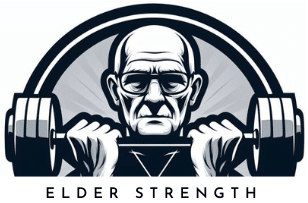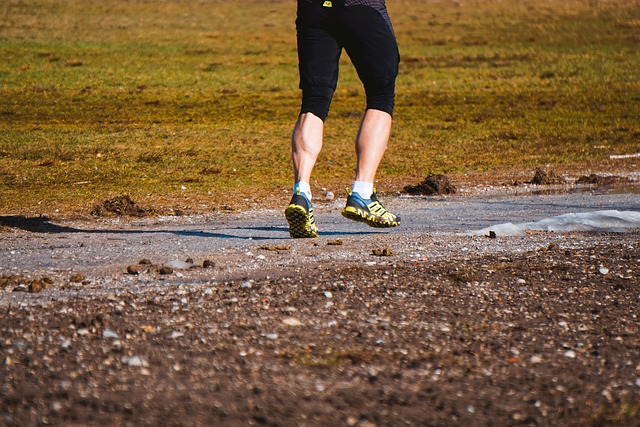In previous posts in my exercise library, I have covered lower-body movements like deadlifts and squats. They are great but they leave out one important muscle group of the legs. The calves! There’s no better exercise for calves than calf raises. Read on why they are a must for seniors!
Calves are probably one of the most neglected, yet one of the most important muscle groups of the human body. If you have ever had a calf cramp (everyone has) or sore calves for any other reason, you will know firsthand how difficult it can make simply walking.
Having weak calves can be problematic because they get tired and sore easily, affecting your motivation for having an active lifestyle. Weak calf muscles can also make you susceptible to ankle injuries and even severe injuries like Achilles tendon rupture.
Besides making moving on your feet, strong calves and calf training will improve your circulation at your feet helping to prevent ailments like swollen feet and varicose veins.
This is gravity and the far distance from your heart makes the circulation at your feet weaker than in other parts of your body. When you use your calf muscles, a lot of blood will pump through the tissues. This will increase both lymphatic drainage as well as the venous blood.
Besides these added bonuses having calf strength will simply make locomotion easier. No matter if you are walking, jogging, running, jumping, skating, skiing, cycling or even kayaking, having strong calves will make it easier.
This is because the calves are involved in any form of exercise or activity that uses the legs. Be it inactive or in stabilizing use, like in kayaking.
So as you can see, having strong calves is useful, but how do you make them stronger? With calf raises of course!
What is a calf raise
Calf raise is an exercise that can be performed in a standing or a sitting position. It involves extending the ankle joint, usually to its full range of motion and returning to the starting position.
Extending the ankle joint will activate the muscles of the calf and transfer the force through one of your largest tendons, the Achilles tendon.
Calf raises can be done in a dynamic manner, emulating walking or running. This means the elastic energy of the Achilles tendon is used to reverse the movement at the bottom position of the exercise.
They can also be performed in a more static manner, eliminating the stretch reflex by pausing at the bottom position. Performed this way all the work is done by the calf muscles, instead of the Achilles tendon.
Standing calf raises can be performed either with bodyweight or in a special gym machine. Bodyweight calf raises can be made harder by performing single leg calf raises or by adding weight like a barbell or dumbbells.
Seated calf raises can be performed in a special gym machine.
Muscles involved in the calf raise
The calf muscle consists actually of two muscles, the gastrocnemius and the soleus that together form the triceps surae muscle.
They are responsible for ankle joint flexion and stabilization of the ankle complex. Their main function includes stabilizing during locomotion, preventing the body from falling forward and jumping.
When you stand on your toes or the ball of the feet, you are using the calves to flex the calf muscles. This is essentially what you are doing in a calf raise.
All variations of the calf raise target both of the muscles but standing calf raises target the gastrocnemius more and seated calf raises target the soleus more.
This is a distinction mainly important for athletes and bodybuilders. Seniors will do fine with either variation.
How to perform the calf raise
My recommendation for seniors is to perform simple standing calf raises on a raised platform with both feet. This is because you don’t require any special equipment, it’s easier to maintain balance and the two-leg resistance is more suitable for most seniors when compared to a single leg calf raise (the weight is half of your body weight).
The raised platform will allow a full range of motion, which is important for Achilles tendon strength and mobility. It’s important to focus on the contraction and the full range of motion on each rep.
It’s very easy to cheat on the calf raises so it’s more important to focus more on quality over quantity or resistance. This is easy to achieve by performing the exercise very slowly.
For example, you can take three seconds to lower all the way down until you reach full flexion, pause for a second, count to three once you are at the top and once again pause for a second.
You will find that especially at the top position your muscles will start to fatigue very easily and even cramp. At the first sign of cramping, stop for the day. There is no point in continuing beyond this point because you will only make yourself hurt and risk injury. Just ad a repetition next time.
Are calf raises useful for seniors?
Calf raises are especially useful for seniors because of two reasons. The first is that seniors tend to lose calf strength along with aging because of less activity and due to age-related muscle loss.
Calf raises help to strengthen the calves, making day-to-day activities easier to perform. This also serves as an important function of injury and pain prevention.
Muscle loss is associated with loss of elasticity and mobility in tissues. Because the calf muscles are very important for walking and other forms of locomotion, it’s important to keep the tissues mobile and strong. Calf raises will help you both improve strength and mobility.
Because the calf muscles are responsible for
The second reason calf raises are useful for seniors is lower body circulation. The longer you get from your heart, the harder it is for the heart to pump your blood through your circulation.
You might have noticed that as you age your feet tend to get swollen easier and you might have some varicose veins. Bad circulation in the legs can in a worst-case scenario cause a blood clot that can get loose and travel through your veins to your lungs, causing a pulmonary embolism.
Keeping your leg muscles strong and using them every day will help you prevent circulation problems and pump blood through the veins.
Conclusion
I hope you found this calf raise tutorial useful and will include the exercise in your exercise routine. The calf raise is so simple to perform that you can
While directly training your calves is not as important as overall body strength and daily activity, it definitely has some beneficial effects.
So if you want to enjoy pain-free walking and hiking, better circulation and stronger Achilles tendons, definitely include the calf raise in your routine. After all, it literally takes a minute to perform a set of calf raises.
If you enjoy reading about strength training tips for seniors, please subscribe to my newsletter and bookmark this site. Social shares are appreciated as well!
See you next time!


Hi Jukka, I found this very useful. As you say strengthening your calf muscles helps with any activity.
I do a lot of walking as my form of exercise, due to athritis in the knees. I have been told that I need to build up my thighs due to muscle wastage because of the athritis.
Do you have any tips on this, taking into consideration my limitations because of the athritis.
Until I get your answer, I will start by doing the exercise for the calf muscles.
Thanks for the info,
Frank
Glad to hear you found it useful Frank! Walking is a great form of low-intensity exercise that helps to keep your heart healthy and it’s definitely something I recommend for seniors (and anyone really) in addition to strength training, so it’s great to hear you already do plenty of it!
Unfortunately, walking is not enough to improve your leg strength beyond the bare minimum and you can still lose muscle mass as you age if that’s the only form of exercise you do for your legs. The leg muscles are very large and strong when healthy so they have a huge capacity for improvement with strength training.
That said, I can’t give you direct advice on treating arthritis because that is considered medical advice, which I’m not qualified to give. However, my recommendation would be to design a simple lower body strength training routine that targets the whole legs, not just the quads (front of thighs), with movements that you can perform without significant pain. I would then run it by your treating medical practitioner.
The program would probably include either a squat variation or leg press, maybe Romanian deadlifts (for hamstrings and glutes) and calf raise. You could substitute the squat or leg press with knee extensions if for some reason they feel better for your knees (unlikely because of higher knee shear forces). I hope that helps! Don’t hesitate to contact me if you want to discuss potential training options further. All the best!
Hi Elder,
I hit the gym three times per week and the calves are my weakest muscle group.
I’ve watched some Arnold videos where he shows how to do donkey raises with 2 chicks on his back. It’s super funny but also highly efficient.
I’m going to try the tips you mention here. It seems calf raises are great for building up my calf muscles.
Thanks for the valuable information.
Glad you liked it Asen! I guess my tips are a bit easier than Arnies. Or I don’t know about you, but for some odd reason I always have trouble getting volunteers when I go around asking the women at the gym if they’d be willing to assist me in some calf raises. Go figure…
But seriously speaking calf raises are great for improving calf strength, mobility, and resilience. Strong calves are a lot less likely to cramp while working out. I don’t know about you but calf cramps are one of the most annoying things our bodies can do.